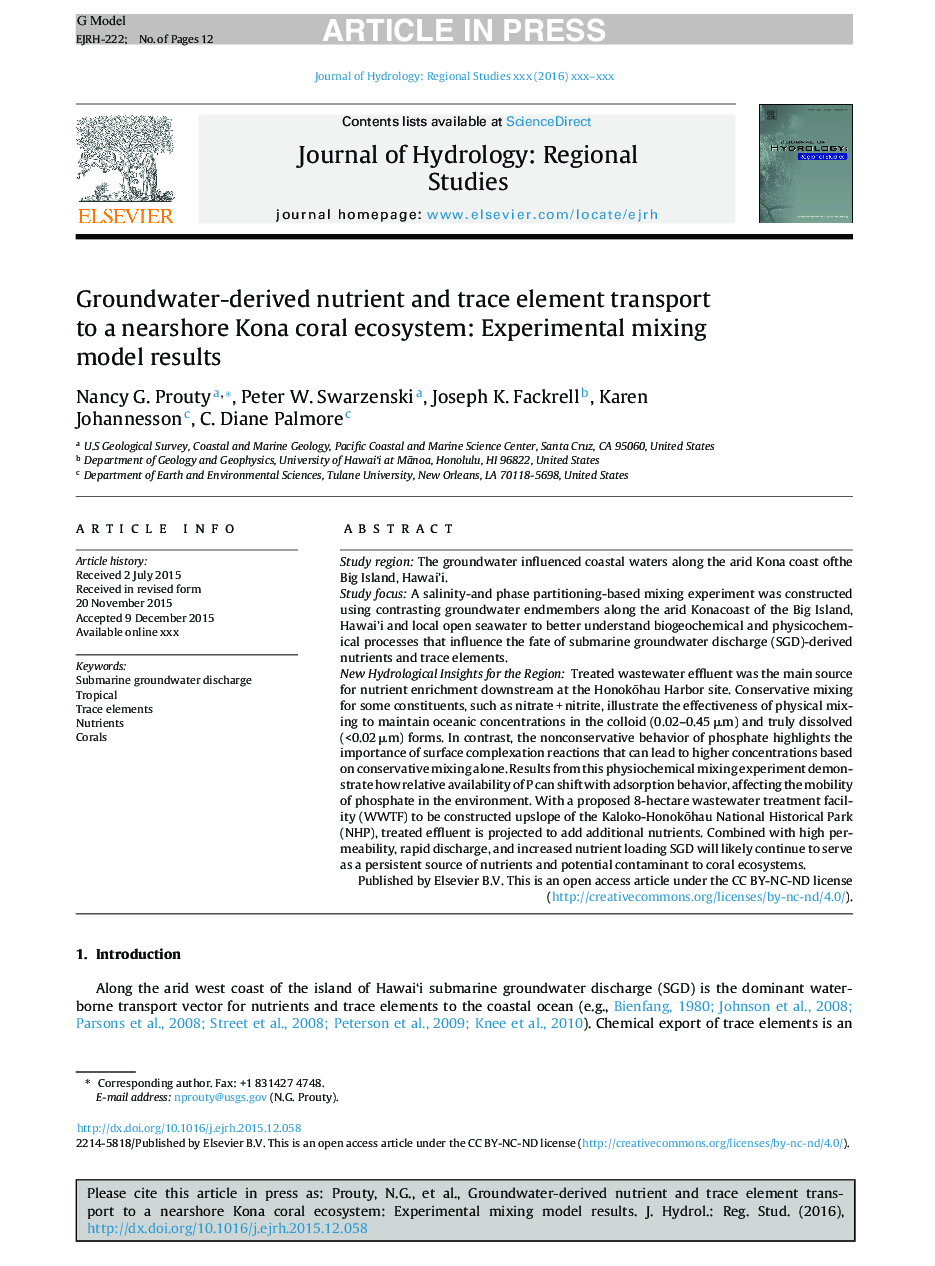| Article ID | Journal | Published Year | Pages | File Type |
|---|---|---|---|---|
| 5752232 | Journal of Hydrology: Regional Studies | 2017 | 12 Pages |
Abstract
Treated wastewater effluent was the main source for nutrient enrichment downstream at the HonokÅhau Harbor site. Conservative mixing for some constituents, such as nitrate + nitrite, illustrate the effectiveness of physical mixing to maintain oceanic concentrations in the colloid (0.02-0.45 μm) and truly dissolved (<0.02 μm) forms. In contrast, the nonconservative behavior of phosphate highlights the importance of surface complexation reactions that can lead to higher concentrations based on conservative mixing alone. Results from this physiochemical mixing experiment demonstrate how relative availability of P can shift with adsorption behavior, affecting the mobility of phosphate in the environment. With a proposed 8-hectare wastewater treatment facility (WWTF) to be constructed upslope of the Kaloko-HonokÅhau National Historical Park (NHP), treated effluent is projected to add additional nutrients. Combined with high permeability, rapid discharge, and increased nutrient loading SGD will likely continue to serve as a persistent source of nutrients and potential contaminant to coral ecosystems.
Related Topics
Physical Sciences and Engineering
Earth and Planetary Sciences
Earth-Surface Processes
Authors
Nancy G. Prouty, Peter W. Swarzenski, Joseph K. Fackrell, Karen Johannesson, C. Diane Palmore,
